What is biceps tendinitis?
Biceps tendinitis is a painful shoulder condition that typically causes pain at the front and side of the shoulder. It effects people of all the ages, but is common in those that lift weights in the gym and play overhead sports such as tennis. At your first appointment your clinician will carry out an ultrasound scan to assess if your tendon is torn and/or inflamed. Biceps tendinitis often responds well to a course of physiotherapy. If the pain is not improving or waking you at night, an ultrasound guided steroid injection as an adjunct to physiotherapy is an effective treatment package, providing pain relief to allow you to return to full function as quickly as possible.
What are the symptoms of biceps tendinitis?
The symptoms of a biceps tendinitis are:
- Pain at the front of the shoulder
- Pain with moving your arm forwards (flexion) and overhead movements
- Tenderness on the front of the shoulder
If this sounds like your pain, read on…
What other conditions can mimic biceps tendinitis?
If this does not sound like your pain there are other conditions that can mimic the pain of biceps tendinitis such as:
Biceps tendinitis vs rotator cuff pain
Biceps tendinitis causes significant pain and tenderness at the front of the shoulder whereas rotator cuff pain often causes a more diffuse, widespread pain around the shoulder and travels down the side of the arm. Rotator cuff pain is often associated with more weakness.
The anatomy
The bicep muscle is the large muscle group at the front of the upper arm that many bodybuilders religiously exercise in the gym.
When you contract your bicep muscle your elbow flexes (bends) and supinates (palm of hand turns upwards). The bicep also helps your shoulder muscles to lift your arm forwards.
The bicep muscle consists of 2 heads (the long head and the short head – see image below). Both bicep heads originate as tendons and attach in and around the shoulder joint. The short head of bicep tendon attaches to a bony prominence called the coracoid process. This part of the bicep muscle is very rarely injured and is, therefore, not discussed in this article.
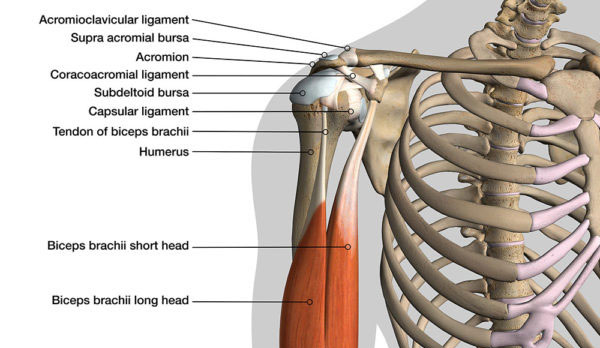
The long head of bicep tendon attaches to a small bony prominence deep inside the shoulder joint called the supraglenoid tubercle and is pivotal in stabilising the shoulder joint. It is commonly injured and is a recognised source of symptoms for people suffering from shoulder pain.
What is the most common symptom of a long head of biceps issue?
The symptoms do vary but essentially a bicep tendon injury can cause pain at the front and the outside of the shoulder or both. The pain can also be referred away from the actual tendon location, down into the arm, the chest and the elbow.
Certain movements of the shoulder will exacerbate the pain, especially movements above shoulder level. Moving the arm forward, out to the side and even reaching behind your back will cause increased pain.
In the gym, a bench press and an overhead press will often aggravate the symptoms. Interestingly a bicep curl is normally pain-free because this exercise works the tendon at the elbow, not the shoulder. If you are getting pain at the elbow when you carry out a biceps curl, you may have injured the distal biceps tendon.
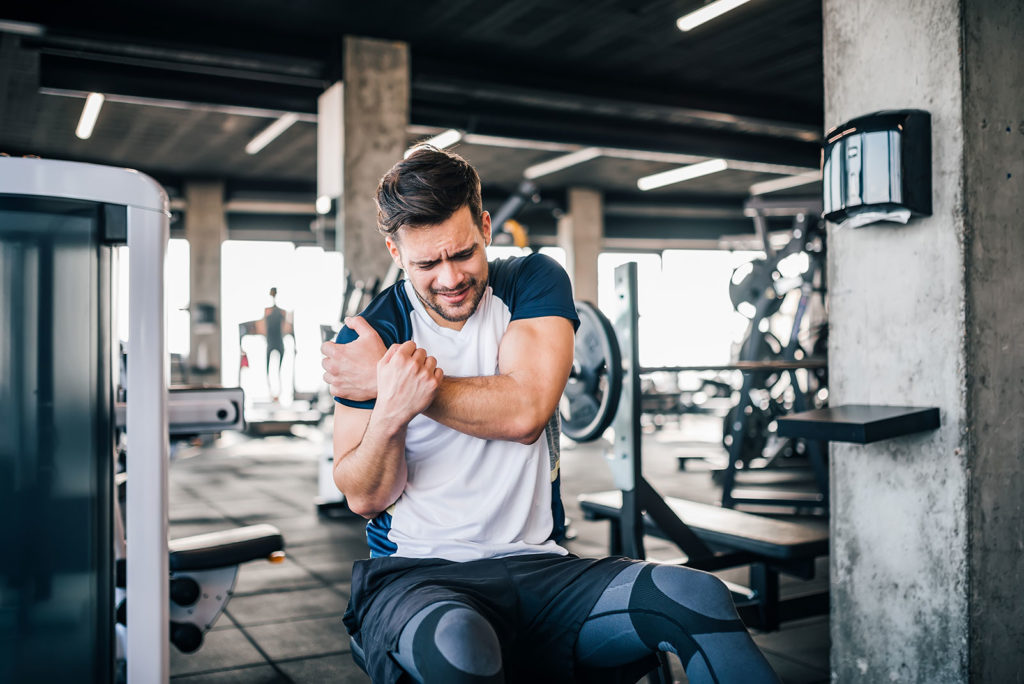
Pain is often worse at night and can even wake you up especially if you lie on it or stretch your arm out. If you do lie on the painful side the symptoms can often be worse with initial movement in the morning.
How does the long head of biceps become injured?
There are many causes of long head of bicep injuries. They vary from lifting too many heavy weights in the gym, to carrying shopping bags home from the supermarket. A bicep injury can also occur if you fall whilst skiing or cycling. It is not uncommon that there is no specific event that precedes the pain and the symptoms arise for no apparent reason.
The onset of pain will also depend on the specific type of long head of bicep problem you have sustained. The different types will be discussed below.
What are the different types of long head of biceps problems?
Long head of bicep tendon pain commonly occurs concurrently with other shoulder issues such as rotator cuff issues such as a tear or tendinopathy. The rotator cuff is a set of deep muscles of the shoulder responsible for stability and rotational movements (Atsushi et al, 2016).
The long head of bicep tendon sits within a groove in the upper arm and is encapsulated within a tendon sheath. A tendon sheath is a layer of tissue around the tendon.
Injuries occur either to the tendon itself or the tendon sheath.
1. Tendon injuries – these occur due to prolonged overuse of the tendon or due to a fall or injury, causing pain and swelling of the tendon. This is known as tendinopathy. More severe cases of tendinopathy can result in a tear of the tendon.
One cause of tendinopathy is when the tendon itself slips out of the bony groove it is designed to sit in. This groove is known as the bicipital groove. This slipping occurs due to an insufficiency in the overlying ligament which is designed to keep the tendon situated in the bony groove. This condition is called long head of biceps subluxation/dislocation.
2. Tenosynovitis – This is inflammation of the tendon sheath (the layer of tissue around the tendon) and can be a very painful condition.
3. Rupture – these injuries are rare in the young sporting population, however, as age increases the likelihood of a long head of bicep tendon rupture increases.
A rupture is when the tendon is torn into two (see image below). Incidents rates are dramatically increased after the age of 50. 96% of all long head of bicep injuries in this population is due to tendon rupture (Carter et al, 1999).
Most clients who have sustained a long head of biceps rupture display a ‘Popeye Sign ‘ in the arm (see below). This makes the diagnosis relatively straight forward.
Surgery is not routinely conducted on long head of bicep ruptures in this population due to poor clinical outcomes. Long head of bicep tendon ruptures is most commonly treated conservatively using physiotherapy and exercise prescription.
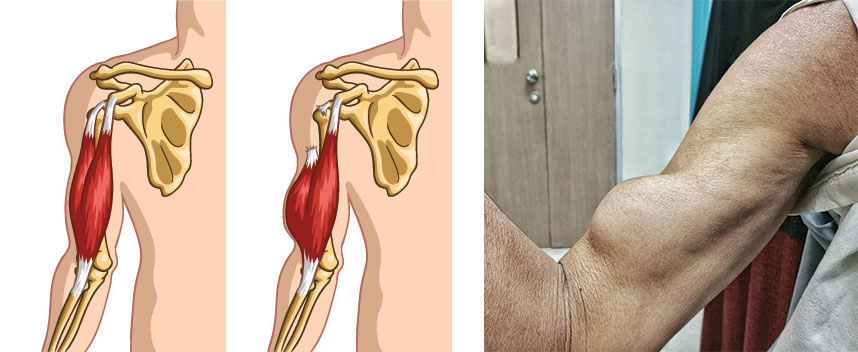
How do you diagnose a long head of biceps tendon problem?
Long head of biceps tendon pain is diagnosed through clinical examination and diagnostic ultrasound. A series of clinical tests are used to help diagnose this condition; however, research has shown that many of the clinical tests used to diagnose long head of bicep pathology are not very accurate (Chen et al, 2011).
In simple terms, if you think you may have a biceps issue a doctor, physiotherapist or any other health professional cannot confirm this diagnosis without a diagnostic ultrasound scan or MRI scan
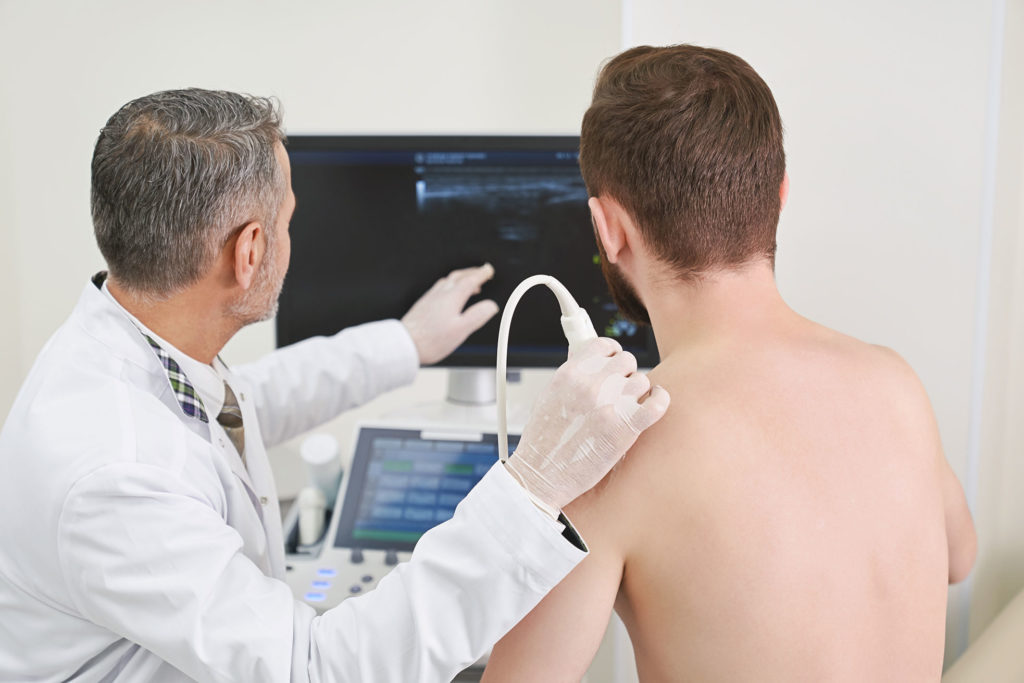
Diagnostic musculoskeletal ultrasound imaging is well documented within the evidence to be as effective as MRI in diagnosing shoulder tendon pathology including long head of biceps issues (Joseph, 2009). Due to the lack of specific clinical tests, the use of diagnostic musculoskeletal ultrasound is critical for gaining a definitive diagnosis.
On your first session we will carry out a clinical assessment and a diagnostic ultrasound scan to make a diagnosis and if appropriate an ultrasound-guided injection. There is no extra charge for the scan. Diagnostic ultrasound can differentiate all types of long head of biceps issues including tendinopathy, a tear, tenosynovitis, subluxation/dislocation and rupture.
How is long head of biceps tendon pain treated?
Physiotherapy
Most bicep tendon issues can be successfully treated using a progressive strengthening program designed to restore normal movement and increase strength around the shoulder joint. This will incorporate exercises to strengthen the biceps itself, the rotator cuff tendons and the scapula muscles. It will also include advise regards activity modification what to avoid.

At Complete Physio, we have a team of highly experienced physiotherapists who are able to safely and effectively prescribe a rehabilitation program tailored to your needs.
If your bicep tendon pain does not subside there are a few further options available to you to help reduce your pain and get you back to full function.
Ultrasound-guided corticosteroid injection
If you have been diagnosed with a long head of biceps issue and the pain is not improving, then you should consider an ultrasound-guided steroid injection. Steroid (also known as corticosteroid) is a strong anti-inflammatory medication, commonly used in sports medicine. The role of a steroid injection is to reduce your pain to allow you to engage in a rehabilitation programme which strengthens the shoulder muscles and enables you to achieve full function. The injection provides a ‘window of opportunity’ to carry out your physiotherapy exercises with less /no pain.
It is involved in shoulder impingement disorders and can be a target for a steroid injection, particularly when a sub-acromial bursa injection has not provided significant enough pain relief. The long head of biceps tendon is sometimes referred to as the ‘fifth’ rotator cuff and can be involved in rotator cuff type pain. It has been demonstrated to exist in combination with other shoulder pathologies such as rotator cuff disorders and capsulitis (Redondo-Alonso et al, 2014).
The injection reduces the swelling in and/or around the tendon as is appropriate for tendinopathy, tenosynovitis and some partial tears. It is not appropriate for the treatment of a long head of biceps rupture.
A recent systematic review (Eldra et al. 2018) revealed that ultrasound-guided steroid injection for the treatment of long head of bicep tenosynovitis was significantly more accurate, with (90%) of injections successfully targeting the tendon sheath in comparison to “blind’ landmark guided injections (30%). This significant increase in accuracy was shown to be more efficacious with a significant improvement in pain reduction post-injection.
Steroid injections for long head of biceps should be carried out using ultrasound guidance. If you have been diagnosed with a long head of biceps problem and have received an unguided steroid injection which was unsuccessful, it is likely the injections did not reach the target tissue/area. In these cases, a repeat injection under ultrasound guidance can often achieve the required outcome.
Non-operative treatments including corticosteroid injections are effective for the treatment of biceps tendon issues. Zhang et al, 2011, showed that 80% of patients had significant pain relief following injection into biceps tendon sheath using ultrasound guidance. Patients who had an ultrasound-guided injection had a significantly improved result when compared to ‘unguided’ or landmark guided injections.
All clinicians at Complete are highly specialised physiotherapists, independent prescribers, injection therapists and musculoskeletal sonographers. On your initial assessment, your therapist will be able to formally diagnose your condition using a combination of clinical testing and a diagnostic ultrasound scan. If deemed safe and appropriate your clinician will discuss the provision of an ultrasound-guided injection. There is no need for a GP referral.
If you think you may have a long head of biceps issue or you would like more information regarding this diagnosis or our ultrasound-guided injection service please do not hesitate to contact us. To make an appointment please contact us on 0207 4823875 or email injections@complete-physio.co.uk.


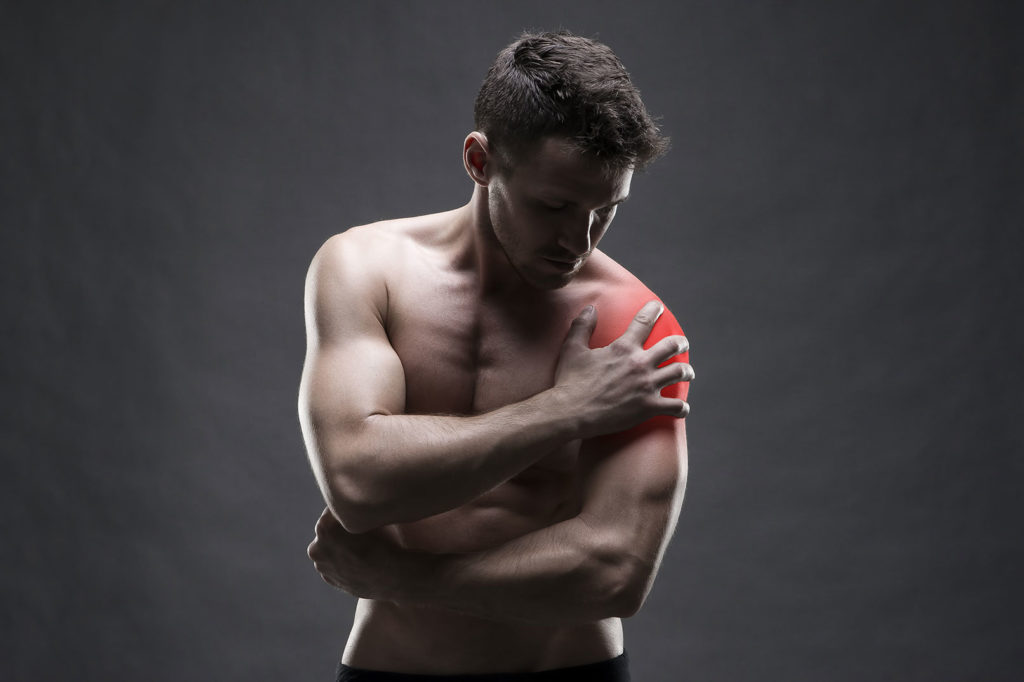
Leave A Comment